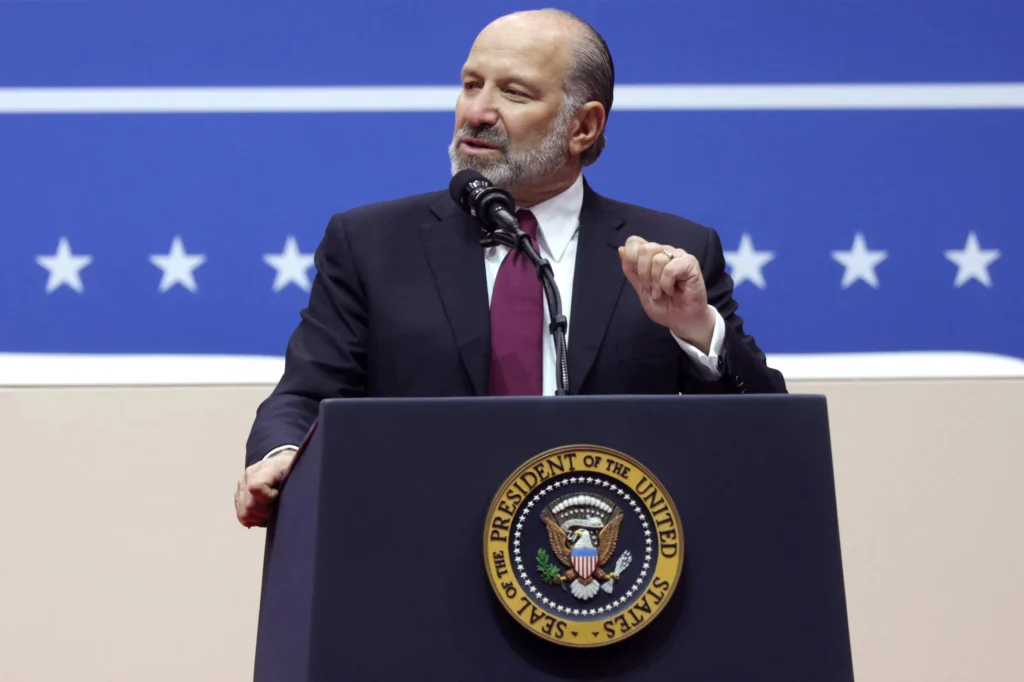India and U.S. can only finalise ‘mini’ trade deal this year: Sources

India-US Trade Deal: What’s Coming and What’s Holding It Back
The idea of a trade agreement between India and the United States has been on the table for years. Both countries share strong economic and strategic ties, and a trade deal would be a significant milestone. Recently, US Secretary of Commerce Howard Lutnick stirred optimism by saying that a trade deal between India and the US could materialize in the “not too distant future.” His comments have reignited hope, especially at a time when both economies are exploring ways to deepen their partnership.
However, despite the positive rhetoric, the ground reality is more cautious. A senior Indian government official has clarified that while talks are progressing, a full-fledged comprehensive trade deal is still a long way off. At best, any deal that might be signed this year would likely be a “mini-deal” — a limited agreement addressing only a few key issues.
So, what exactly is holding up a full-scale trade agreement between the world’s largest and most powerful democracies? And what would a mini-deal really look like?
The State of Play: Trade Talks Ongoing
Trade discussions between India and the US are ongoing and have gone through several phases over the years. The two countries have expressed interest in reducing trade barriers, expanding market access, and resolving disputes around tariffs and regulations.
While progress has been made in some areas, significant differences still exist — particularly around agriculture, intellectual property rights, digital trade, and market access for services. These are complex issues that require careful negotiation and mutual understanding.
According to sources, there has been some movement in resolving long-standing issues, especially around certain agricultural products and tariff structures. However, a broad agreement covering all contentious sectors is still a distant goal.
What is a “Mini-Deal”?
A “mini-deal” or “early harvest agreement” is essentially a smaller trade pact that includes limited commitments on both sides. It’s designed to build momentum and trust while resolving easier issues first. Think of it as a starter course before the full meal.
Such a deal could include:
- Reductions or removals of tariffs on select goods
- Agreements on specific agricultural exports or imports
- Simplified customs procedures
- Early cooperation on clean energy or digital trade frameworks
A mini-deal doesn’t address every issue, but it shows intent and builds confidence. For India and the US, this could be a stepping stone toward a larger Free Trade Agreement (FTA) in the future.
Why a Comprehensive Deal Is Still Far Off
Despite strong ties and a growing bilateral trade volume (estimated to be over $190 billion in 2023), there are several sticking points that make a full agreement difficult in the short term:
1. Agricultural Access
The US wants greater market access for its dairy, poultry, and other farm products — something that India has been cautious about due to sensitivities among its farmers.
2. Tariff Structures
India maintains relatively high tariffs on several products, including electronics, wine, and motorcycles. The US has pushed for reductions, but India uses tariffs to protect domestic industries.
3. Digital Trade and Data Localization
The US supports free flow of data across borders, while India has proposed data localization policies that require companies to store data locally. This remains a critical gap.
4. Labor and Environmental Standards
The US often insists on including labor rights and environmental commitments in trade agreements — issues that India sometimes sees as outside the trade framework.
5. Intellectual Property Rights
There are differences in how the two nations view patent protections, especially for pharmaceuticals. India emphasizes affordability and access, while the US supports stronger IP protections for its companies.
The Political Timing Factor
Another factor influencing the pace of trade talks is politics. The US is gearing up for its presidential elections in 2024, and India just concluded its national elections in 2024. Both countries have busy domestic agendas, making it difficult to commit political capital to a complex trade agreement.
Moreover, India prefers a balanced deal — one that doesn’t look like a concession to American demands. Meanwhile, the US wants to protect its own industries and workers.
These competing priorities mean that even if both sides want a deal, they need to carefully navigate timing, perception, and policy alignment.
Why Even a Mini-Deal Matters
While it may sound underwhelming, a mini-deal can still have significant benefits. For one, it would improve market access for certain products and boost investor confidence. It would also strengthen the strategic partnership between the two countries — especially important in the context of China’s rise and shifting global trade dynamics.
A mini-deal can also act as a confidence-building measure, demonstrating that India and the US can work through differences and make tangible progress. It may not grab headlines like a full-blown FTA, but it would be a solid step forward.
Business Community’s Reaction
India’s business community has responded to the mini-deal idea with cautious optimism. Sectors like pharmaceuticals, textiles, clean energy, and IT services see great potential in closer India-US trade cooperation. However, they also want the government to ensure that any deal protects domestic interests and isn’t rushed.
In the US, industry groups have long advocated for smoother trade ties with India, especially in sectors like agriculture, medical equipment, digital services, and energy.
Conclusion: Cautious Hope for Now
There’s no doubt that India-US trade ties are on the rise, and both sides recognize the long-term value of a deeper economic partnership. While a comprehensive deal isn’t coming this year, a mini-deal appears likely — and welcome. It can pave the way for future negotiations, address some pressing trade issues, and reinforce the two nations’ shared commitment to collaboration.
As Secretary Lutnick rightly put it, a deal is possible in the “not too distant future.” But as the senior Indian official cautioned, it’ll take time, patience, and trust to get there fully.






